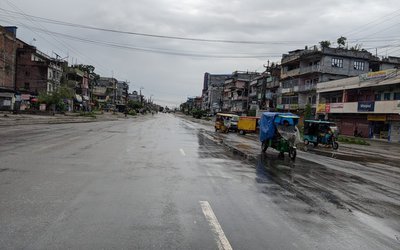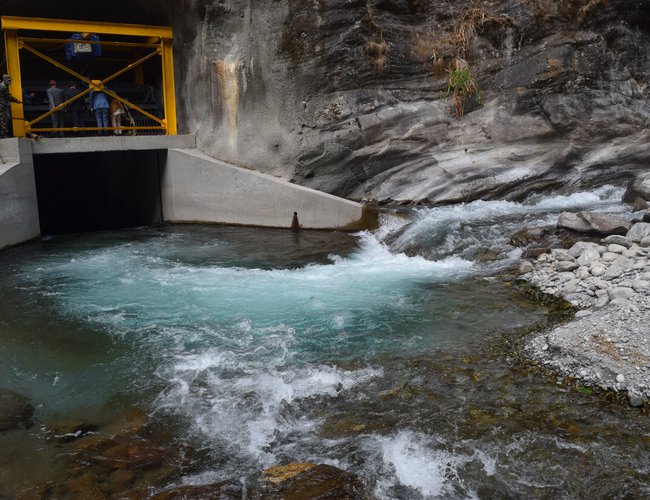
For Tiresh Prasad Khatri, ED of Melamchi Water Development Board, March 28 was a remarkable day when the water received from Melamchi was distributed to the consumers through KUKL’s pipelines. As secretary Belbase was leading a team in Kathmandu, observing the distribution of water, ED Khatri was discharging the water from treatment plant and monitoring the entire process along with his technical team in Sundarijal.
Secretary Belbase and Khatri, the 14th ED of the board, proved to be the luckiest persons to see this grand success in distribution of water brought from a 27-kilometer long tunnel. Although many of his predecessors aspired for this to happen, ED Khatri snatched this opportunity.
As a saying goes, pride and pleasure come with sacrifice and price, ED Khatri, who is haunted by the tragic event of last July, in which two persons died when one of the gates of the tunnel outflanked, remains highly alert and concerned about monitoring the level of water and movement in the tunnel from his mobile app. For the last six weeks, ED Khatri, so to say, has not slept well.
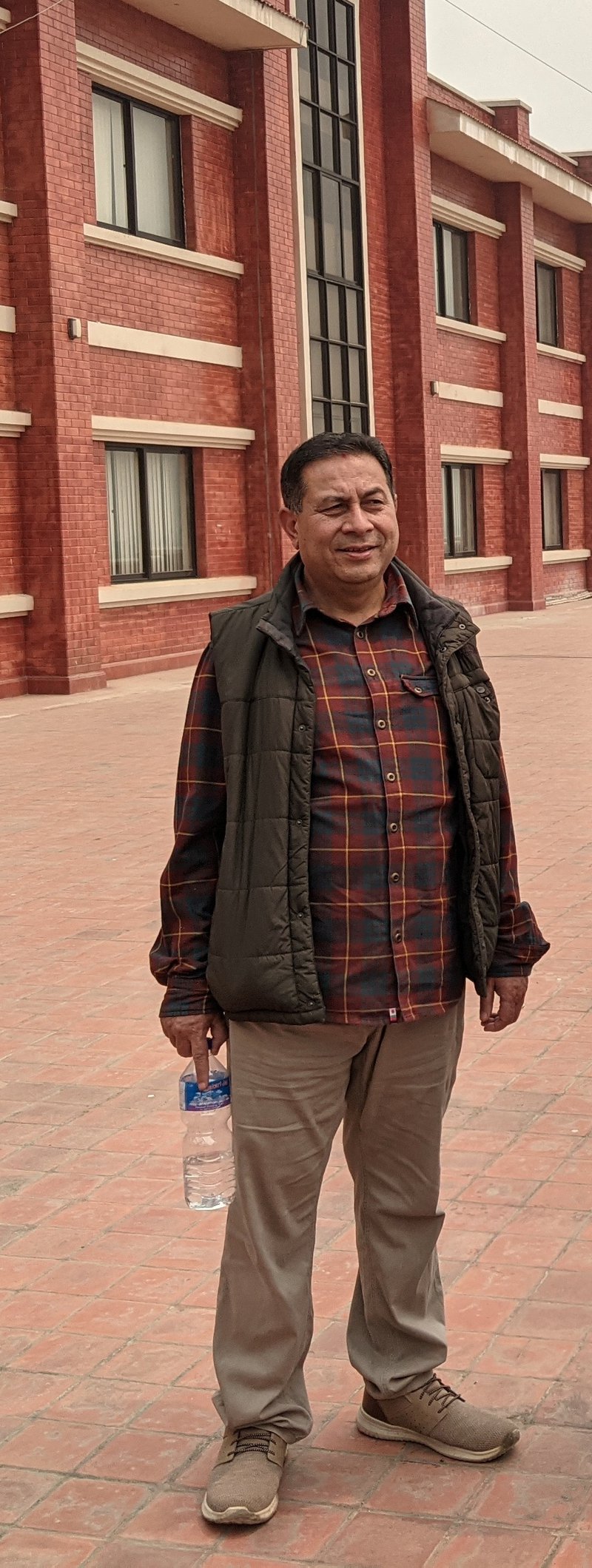
ED Khatri
Under the leadership of secretary Belbase, a well-experienced civil engineer known as the father of TBM Tunnel technology in Nepal, the board and entire team have not spared any time and effort to make this testing and commissioning secure and successful. Once bitten, twice shy, as they are, because not all went well in the past.
Learning from past events, secretary Belbase took all necessary technical safety measures before testing and commissioning of tunnel. ED Khatri remained highly alert all the time.
"I woke up several times in the midnight during these days. From early morning to midnight, I rely so much on the mobile apps to observe the state of the tunnel and water treatment plant," said ED Khatri.
Backed by secretary Belbase and his entire technical colleagues in the process, ED Khatri is not alone in the effort. But, his responsibility as an Executive Director put him under stress and worry.
"Our entire teams have been working very cautiously with high alert. Secretary Belbase is inquiring frequently and directing us as required. This is entirely a great team work," said Khatri.
Joining civil service as a civil engineer at the Department of Drinking Water and Sewerage in 1990, Khatri has spent his entire career in this sector. Although Khatri also completed some major drinking water projects including one in Birendranagar Surkhet, he derives a greater satisfaction over leading the team for finalization of the Melamchi drinking water project. In his twenty-eight years in the sector, this is his lifetime’s achievement, a rarest of the rare event for any engineer to cherish.
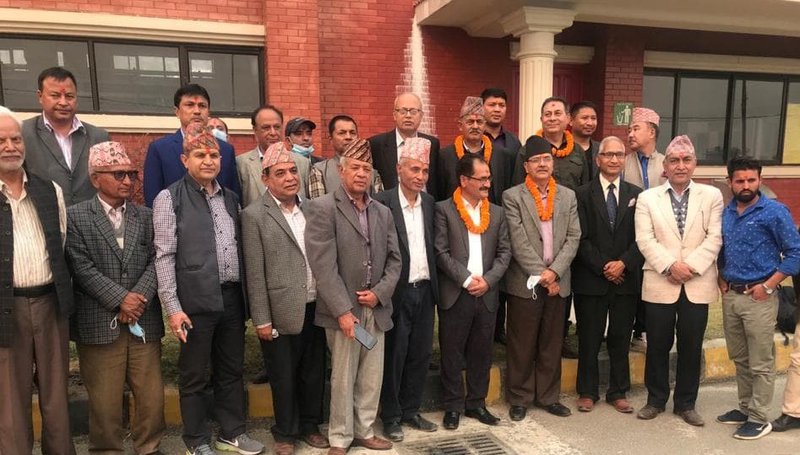
When Khatri joined as a young engineer, he used to read the statements of then prime minister Krishna Prasad Bhattarai saying that the dirt of roads of Kathmandu would be flushed out by the water of the Melamchi river.
After almost three decades, ED Khatri does not have enough water to flush the expanded and overcrowded streets of Kathmandu valley. However, his team has been up to supplying enough water to households of thirsty Kathmandu.
How strange, at a time when Khatri is at the helm of Melamchi Drinking Water Supply Board, his water tap is yet to get the water from Melamchi. "I will have to wait for a few more months to receive the water. However, it gives me immense pleasure and satisfaction to see the water coming from the taps of the valley,” said Khatri. “If others get it now, I will also get it later."
History of Melamchi
Visualized by King Mahendra in 1968 and King Birendra put the project at policy level and former Prime minister Krishna Prasad Bhattarai picked up Melamchi as a political debate in 1991, making it his election promise to his voters. However, not only Bhattarai, all the candidates of Nepali Congress except Daman Nath Dhungana, lost the elections in 1991 from Kathmandu Valley.
Melamchi river is regarded by the local Hyalmo Community as a sacred river coming from the power of Padmasambhava, reportedly identified during King Mahendra’s visit of 1965. Some of the most ancient old monasteries like Tarkeghyang and many other Buddhist monasteries are there as testimonies.
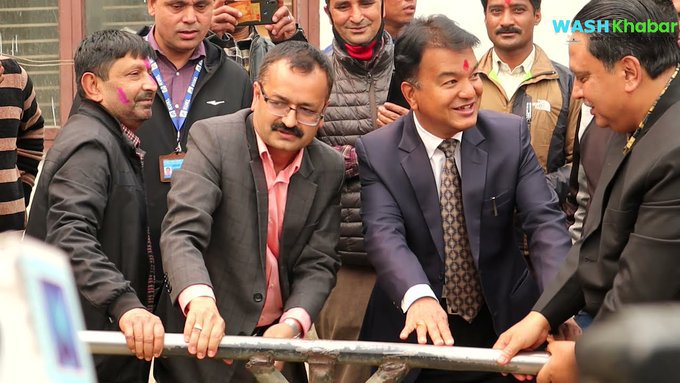
CPN-UML swept the valley votes making a mockery of Bhattarai’s slogan to flush the streets of Kathmandu with Melamchi water. Although Bhattarai won the elections in 1999 from Birgunj Constituency, he fulfilled his promise by taking the decision to revive the project.
What a coincidence, PM Oli, who made so many jokes on Bhattarai’s Melamchi remarks, is now hailing Melamchi Drinking Water Project as major achievement to defend his tenure.
Over a dozen of secretaries have contributed in the Melamchi process. However, secretary Madhav Belbase guided and took major decisions at the crucial moments to complete the project.
A graduate of the College of Engineering, Roorkee, Belbase is known as the father of TBM Nepal for successfully using the technology to construct the Bheri Babai diversion tunnel. Completing the testing and commissioning of the Melamchi Tunnel is another milestone for him.
What an interesting linkage, the first Nepali graduate of College of Engineering Roorkee Chief engineer and colonial late Dilli Jung Thapa was the first to make a Tunnel in Nepal 103 years ago.
Madhav To Madhav
Melamchi too has some interesting linkages. As then head of Foreign Aid Division of Ministry of Finance, former chief secretary and minister late Madhav Prasad Ghimire had revived the Melamchi finalizing the financial matter with Asian Development Bank in 1999. Coincidentally, another Madhav, that is secretary Belbase, has rescued the project from virtually nowhere when the contractor left the project at the last minute and from a major disaster in July.
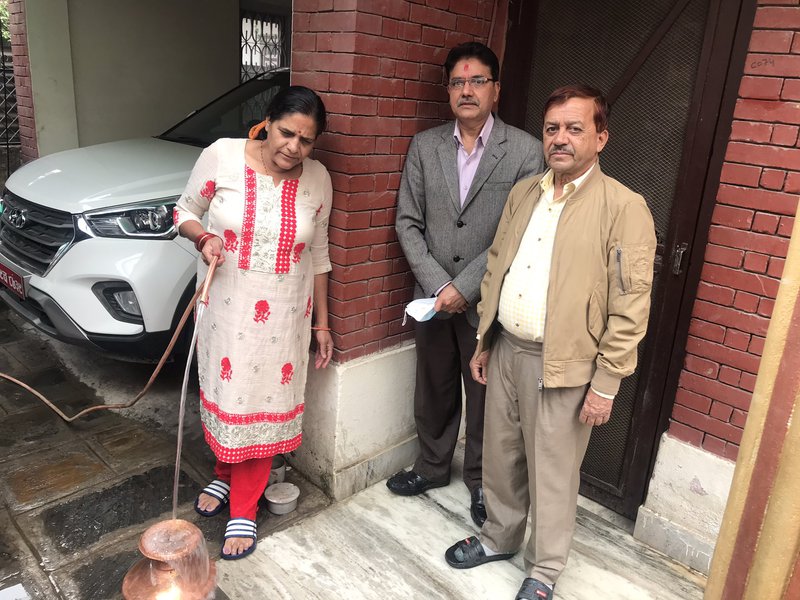
Watching all the decisions and moves closely regarding the Melamchi Drinking Water Project from the very inception of the project as section officer at Foreign Aid Division, economic advisor to Prime Minister KP. Sharma Oli and former finance secretary Lal Shanker Ghimire, gives credit to late Ghimire for giving life to the project in 1999 negotiating with Asian Development Bank.
From the early days, many creams of the cream of Nepalese engineers have contributed to the project till the time of the current secretary Belbase, who finally emerged as a Bhagirathi bringing the water to Bagmati.
In the word of Dipak Gyawali, Belbase is professionally successful and fortunate as engineer who made a breakthrough of Tunnel of Bheri Babai Diversion and completed the work and now brought the water to Kathmandu from Melamchi despite all political and institutional anarchy. Namaskar to a modern Bhagirath!!! Folded hands. “Nyaah! It is we who have to thank you for maintaining high standards of service in such mad, politically frustrating times! I hope younger engineers find inspiration from you.”
“Karna Dhoj Adhikariji and Madhusudhan Dhakalji (both secretaries of Min Water Resources under which Department of Water Supply &Sewerage was located in those late 1970s, early 1980s days) who took critical decisions regarding valley water supply,” Dipak Gyawali wrote in a tweet.
In a reply to Dipak Gyawali, Arun Dhoj Adhikari, who also served as an engineer at the Ministry of Water Resources, tweeted, “Bhubaneshwar Pradhan who succeeded my father as Director-General of Irrigation Department in 1973 and who later became Secretary of WECS and 1980, Secretary of Min. Water Resources and then Secretary. at NPC in 1992/93 knew Melamchi inside out.”
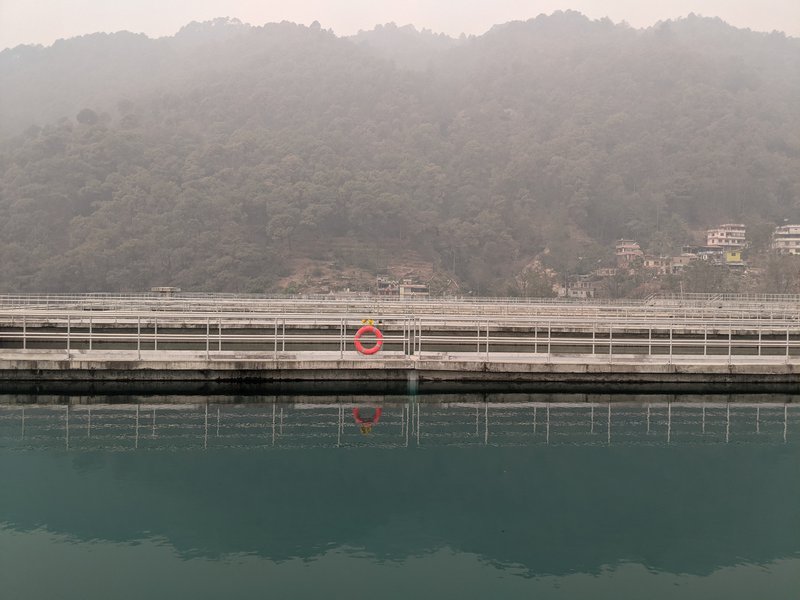
“Melamchi was already part of King Birendra's ‘Achieving Asian Standards by 2000’ program in 1984/85. The search for reliable water supply for Kathmandu was initiated in 1968 followed by setting up WSSD, including Kodku, Balkhu,” tweets Gyawali.
Melamchi Drinking Water Board organized a get-together of all the former executive directors, secretaries and ministers. Attended by former minister Bina Magar and Water Supply minister Mani Thapa and secretary Belbase, former Executive Directors shared their experiences. Former finance secretary and executive director of the board Suman Prasad Sharma said that all those who attended the program shared their experiences.
Former secretaries Tirtharaj Gyawali, Tana Gautam, Purna Kadariya, Kishore Thapa, Krishna Raj BC and Tulsi Sitaula attended the interaction. Among the former executive Director Poshannath Nepal, Dhruba Bahadur Shrestha, Rajkumar Malla, Hari Prasad Sharma, Krishna Prasad Acharya, Ghan Shayam Bhattarai, Ramchandra Devkota and current ED Tiresh Khatri were also present.
Following the launching of Melamchi, 19 secretaries and 13 Executive Directors have already served in the project.
Melamchi Water Reaches Kathmandu
The water from the Melamchi River in Sindhupalchok district finally fell into the water pots of Kathmanduites on March 28, approximately after 19 years since the beginning of the Melamchi Water Supply Project (MWSP). Water first flowed from about 512 taps in the Anamnagar area at 2:00 PM.
“Congratulations residents of Anamnagar to receive the water first time from Melamchi,” tweeted Madhav Belbase on March 28.
“The water is distributed in Mahankal, Minbhawan and Anamnagar of Kathmandu and Khumaltar of Lalitpur area through the Kathmandu Upatakya Khanepani Limited (KUKL)’s distribution network in the first phase,” said Khatri, Executive Director of the Melamchi Water Supply Development Board.
“About 45 million liters of water was sent to the reservoirs in the Kathmandu Valley on the first day. The amount of water to be distributed would be increased to 85 million liters,” said Khatri.
Melamchi Made Kathmandu Modern
Melamchi is not all about the tunnel and diversion of water. It also involves a huge modernization of the water distribution system in the valley. In the history of Kathmandu valley, the Melamchi project has laid over 600 pipelines replacing over a century-old system of pipelines.
Thus, Melamchi is working now with a cautious approach before sending water to the households. The newly installed pipelines should be flushed and cleaned. The project stated that it might take about seven months to take water to every corner of the distribution.
As water from the Melamchi River would only be distributed through the supply network of the KUKL means the areas that have separate water supply projects would not be benefitted now.
The first phase of the MWSP was supposed to be completed in 2008 but it went through multiple deadline extensions and cost overrun. It was affected by the bureaucratic process, Maoist rebellion, 2015 earthquake and dispute with Italian contractor company CMC.
Melamchi is the first national pride project to be completed. Some construction at the head works still remains although water reached the valley.
Bulk distribution center built by the Project Execution Directorate, PID, is planning to distribute the water to every household through the old pipe. This distribution is a test until the system is stabilized from million liters daily.
After testing, cleaning and connecting to the household supply channel, water distribution will be started in the newly laid pipelines.
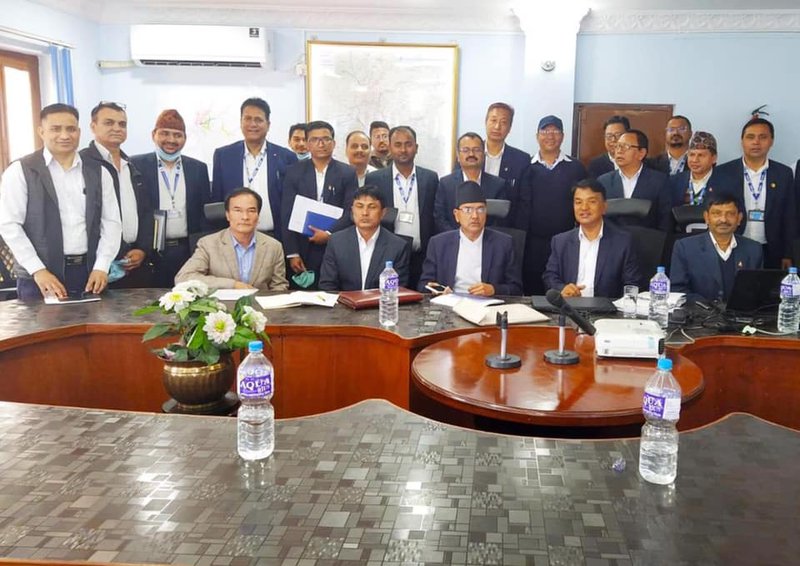
For Nepal government to Asian Development Bank, the completion of Melamchi is a matter of major achievement. With limited knowledge and skill, the transfer of water from Kosi to Bagmati river Basin is technically a milestone. Facing several obstructions, the project is very close to complete for the satisfaction for all. Several people have played roles, secretary Madhav Belbase finally succeeded to bring the water to Kathmandu as Bhaigrath.
Project Description
Melamchi Water Supply Project
The Melamchi Water Supply Project (MWSP) is considered to be the most viable long-term alternative to ease the chronic water shortage situation within the Kathmandu Valley. The Project is designed to divert about 170 MLD of fresh water to Kathmandu Valley from the Melamchi River in the Sindhupalchowk district. Augmenting this supply by adding about a further 170 MLD each from the Yangri and Larke rivers, which lie in the upstream proximity of Melamchi is also being investigated as future supply sources.
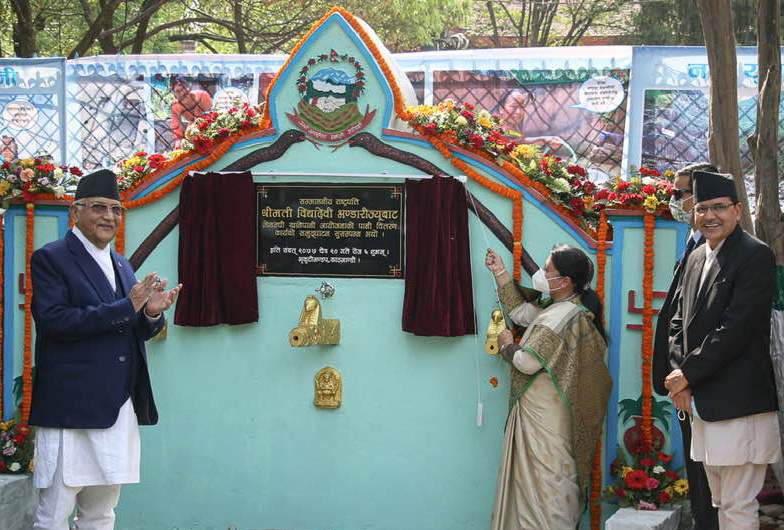
Ministry of Physical Planning and Works (MPPW) is the executing agency for the Project and an autonomous Melamchi Water Supply Development Board, formulated for Project implementation, is the implementing agency.
The Board, as an independent project implementing body has come a long way to collect the necessary funds to implement the project since 1998. The major donor of the project, Asian Development Bank (ADB) approved a Loan 1820-NEP (SF) on 21st December 2000 and it was effective from 28th November 2001. After six years of project implementation, the Government of Nepal and the project’s funding partners felt the necessity to change the scopes of project implementation arrangement by splitting the MWSP into the following two distinct sub-projects in 2007;
(i) the Melamchi River Water Diversion Subproject (Sub-Project -1) covering all project activities in Melamchi Valley including constructions of Water Diversion Tunnel (WDT) and Water Treatment Plant (WTP) at Sundarijal and
(ii) Kathmandu Valley Water Supply and Sanitation Subproject (Subproject -2) comprising water distribution activities in Kathmandu Valley. EMP implementation requirements as per EIA and EMP of MWSP, 2000 and 2001 have been covered both of these sub-projects.
The MWSP originally comprised four parts:
i) infrastructure development;
ii) social and environmental support;
iii) institutional reforms; and
iv) project implementation support.
A complementary Kathmandu Valley Water Services Sector Development Program (SDP) has also been effective from December 2004 to support reforms and institutional development in the water services sector engaging private sector participation (PSP).
Various factors including political events during the past 6 years of MWSP and 3 years of SDP implementation did not make it possible to complete the project as planned. The withdrawal of the three co-financing development partners for the Project – the World Bank, NORAD, and SIDA resulted in a shortfall of $133 million in the originally projected cost of US$ 464 million as priced in 2000 AD.
ADB approved the proposed project restructuring, mainly reflecting the above mentioned financial and institutional changes made during its 6 years of implementation and proposing the removal of identified obstacles in implementation, in February 2008. After the restructuring, the Project has now been revised to a total of $317.3 million and a completion date of June 2013. The cost will be jointly funded by several agencies such as: ADB (Loan 1820-NEP) – $137 m, JBIC – $ 47.5 m, JICA – $18 m, NDF – $10.5 m, OPEC – $13.7 m, and GoN – $ 90.6 million.
Out of US$317.3 million Subproject I ,Melamchi Water Supply Project (MWSP) will be utilizing US$ 249.4 million with following contribution of different donors ADB – US$ 103.8 m 41.62%, JBIC(JICA) – US$47.5 m 19%, NDF- US$- 10.5 m 4.2%, OPEC- US$ 13.7m 5.5% and GoN US$73.9 m (29.63%)
The revised Project comprises three components: Part A. Melamchi Valley Subproject (Subproject I), Part B. Kathmandu Valley Subproject (Subproject II), and Part C. Project Support (Subproject III) as described below:
Part A. Subproject I Comprises:
Construction of Melamchi Diversion Scheme to carry out about 170 MLD of raw water from the Melamchi River into Kathmandu Valley through a 26.0 km tunnel;
Construction of about 43 km of access roads and upgrading of about 29 km of road to assist the construction of the Project facilities and their maintenance;
Construction of a water treatment plant with an initial capacity of at least 170 MLD and expandable to about 510 MLD to treat the Melamchi River Water; and
Development and implementation of a social upliftment program, including – a) buffer zone development, b) rural electrification, c) health, d) education, and e) income generation/community development.
Part B. Subproject II Comprises:
Rehabilitation and improvement of distribution networks at primary, secondary, and tertiary levels, house connections, rehabilitation and improvement of existing water supply system including intakes, transmission lines, water treatment plants and service reservoirs;
Construction of a bulk distribution system comprising service reservoirs strategically located in the Kathmandu Valley and bulk water supply pipelines leading to the reservoirs from the water treatment plant in the pipeline and will be constructed once the fund is available;
Undertaking the improvements of waste water system in a phased manner; and
Development of a shallow ground water well field at Manohara within the Kathmandu Valley to extract, treat, and distribute about 20 MLD of water in Kathmandu valley.
Part C. Subproject III Comprises:
Development and implementation of i) a resettlement action plan; and ii) an Environmental Management Plan (EMP) to mitigate direct and indirect Project impacts, including a) hygiene education, b) public relations programs, c) (if required by ADB) a social and environmental monitoring program undertake by a panel of domestic experts, and d) a groundwater monitoring program; and
Provision of support to carry out various Project administration activities, including PMU operations, design and construction supervision, social and environmental activities and training provision of incremental administration and operation costs.
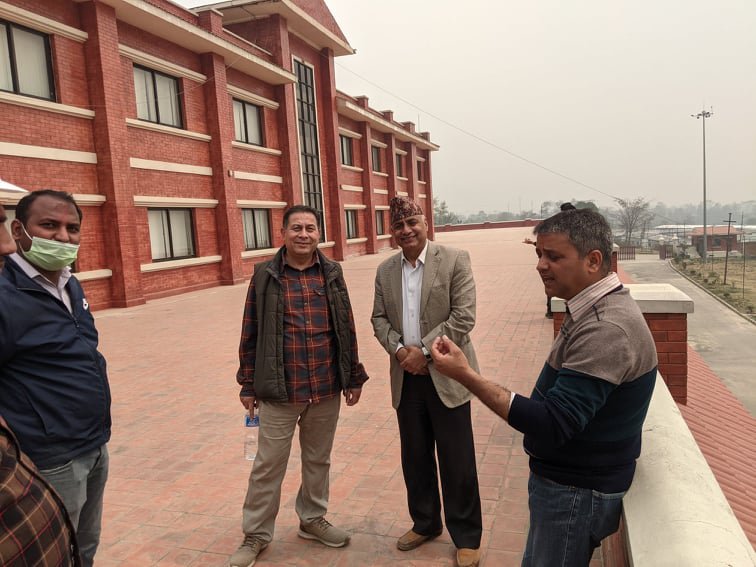
Melamchi Water Supply Development Board

Keshab Poudel
Poudel is the editor of New Spotlight Magazine.
- ERC Nepal Is Focused On Expanding Distribution And Transmission To The Private Sector: ERC Chair Dr. Dhital
- Jul 06, 2025
- FOURTH PROFESSOR Y.N. KHANAL LECTURE: Nepal-China Relations
- Jun 23, 2025
- Colonel JP CROSS: Centenary Birthday
- Jun 23, 2025
- BEEN: Retrofitted For Green
- May 28, 2025
- GGGI has been promoting green growth in Nepal for a decade: Dr. Malle Fofana
- May 21, 2025











